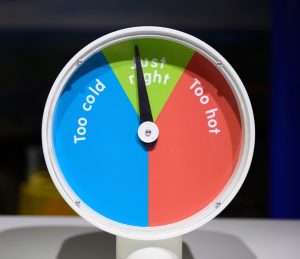When you set the thermostat on your air conditioning system, you pretty take for granted that the system will maintain that temperature throughout your house. But did you ever stop to think about how it’s actually accomplished? The truth is that there are many moving parts that all play a role in keeping your home cool and comfortable, and one of these is the limit switch.
What Is a Limit Switch?
Although you’re probably not aware of it, you’ve encountered plenty of limit switches over the years. A limit switch is anything that stops an electric appliance under certain circumstances. The little switch that turns the light on in the refrigerator when you open the door and then off again when you close it is the perfect example of a limit switch. Another common one is the switch that stops your washer or dryer from running when you open the door. Limit switches are used for a variety of appliances and gadgets to not only save electricity but to keep you and your device safe.
Limit Switches and Air Conditioning
The limit switch on your air conditioning system is the link between the blower on your air handler and the thermostat. When the thermostat senses that the desired indoor temperature has been reached, it stops the air conditioner from producing any more cold air. At that point, it’s important for the blower to stop functioning as well.
If it doesn’t, the blower will continue to move and warm air rather than cold will begin circulating throughout your home. However, if the blower shuts off too soon, the cold air that’s still being generated by the air conditioner won’t be able to circulate. So it’s essential that the blower be switched off at the same time the cold air stops arriving. That’s exactly what the limit switch does.
While it’s only one very small part of a large machine, the limit switch in your air conditioner plays a vital role in keeping your home comfortable and in allowing your air conditioning system to function as efficiently as possible.
If you notice that your air conditioner is shutting off too soon or not soon enough, it may be because of a broken limit switch. Sometimes, the system simply needs to be reset, something you can do with the help of your owner’s manual. However, if your limit switch is broken, you should contact a professional to take a look and determine if it needs to be replaced.
Continue Reading
Tags: Limit Switches, Salt Lake City, thermostat
Posted in Air Conditioning | Comments Off on What Are Limit Switches and How Do They Work?
 Don’t turn your thermostat down!
Don’t turn your thermostat down!

